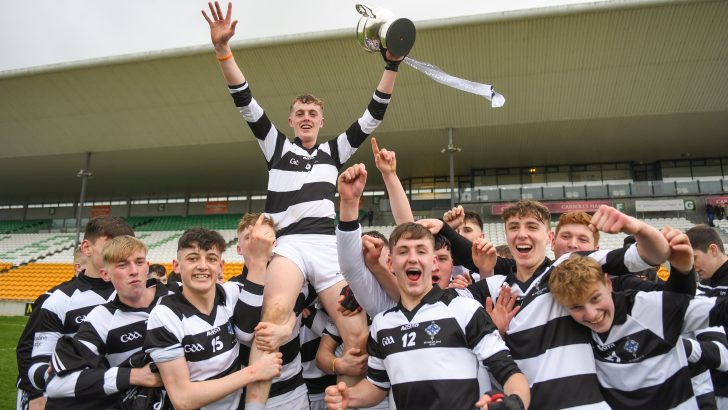I told Seán that he is the best hurler in the county the other day. When you live on the Isle of Wight, you can make such bold statements, safe in the knowledge that Seán and I are perhaps the only hurlers in this particular English county. There is a GAA club across the water in Portsmouth, but on this side of the Solent, we’re it.
A strange and sad thing happened when we moved to England: Seán suddenly stopped playing hurling. Back in Dublin, he went to hurling training once or twice a week with great enthusiasm. Every evening, he would challenge me to a match in the back garden. Most evenings were thus spent bashing a sliotar around. Yet as soon as we touched English soil, no matter how often I suggested it, he refused to play. To my dismay, his hurley slowly gathered dust in the garage. I could never explain it, and it bothered me.
Upon moving over, we had broken it to him gently that there would be no more hurling training in England, as not many people played it. He accepted this stoically, and I promised him that he would practice together as often as he liked. I was baffled when he then refused.
Miraculously, all this changed on St Patrick’s Day. In the run up to it, we had been reading stories about St Patrick as well as some old Irish legends. A particular favourite was the story of how Cúchulainn got his name when Setanta, as a boy, had killed the Cú by bashing a sliotar into the hound’s mouth. On St Patrick’s Day Seán resolved to bring this storybook into school and have his teacher read it at story time. To illustrate it, he also brought in his sliotar and hurley, as few of his classmates would have ever seen such things.
Seán emerged after school that day bursting with pride, his sliotar balanced on his hurley. His chest was emblazoned with stickers, saying “Brilliant!” and “Well done!”. These were awarded, he told me through a big smile, for telling the story of St Patrick, and showing his classmates how hurling was played. The teacher had read the story of Cúchulainn and the class were so entranced that they went on to read the stories of the Children of Lir, Fionn and the Salmon of Knowledge. Seán told he how he was brought up to the front of the class and how he “didn’t get stuck, normally I get stuck, but I didn’t and I told them all about Ireland and St Patrick. They thought it was amazing. And I showed them my hurley and everyone wanted to hold it.”
He babbled on merrily as we walked through the busy schoolyard at home time. He was dribbling the sliotar along as we went. Some fascinated big boys saw this and politely asked for a go. Seán proudly showed them how, and he won further praise from them. Now he knew that his teachers, friends and even the big boys at school all thought hurling was amazing. Ever since that day, he hasn’t stopped playing hurling. He is out the back practicing his skills as I write and our evening matches are back on without fail. He wins every time, somehow, which is all the proof he needs that he is the best hurler on the island.
Clearly, in his six-year-old mind, moving to England meant that hurling just had to stop. Children are more sensitive than we know and they don’t want to be different. But once Seán had been lauded by teachers and friends alike for his skill at this fascinating and exotic sport, hurling was instantly back on. His heritage and culture had been admired and respected. That this happened on St Patrick’s Day is all the more apt.
There are many children from different cultures in Ireland too. Even in small ways, our showing respect and admiration for their native cultures could be similarly transformative for those children.


 Rory Fitzgerald
Rory Fitzgerald 30 March 2019: Conor Murphy of St. Kieran's College lifts the trophy with team-mates following the Masita GAA All-Ireland Hurling Post Primary Schools Croke Cup Final between St. Kieran's College and Presentation College Athenry at O'Connor Park in Tullamore, Offaly. Photo: Harry Murphy/Sportsfile
30 March 2019: Conor Murphy of St. Kieran's College lifts the trophy with team-mates following the Masita GAA All-Ireland Hurling Post Primary Schools Croke Cup Final between St. Kieran's College and Presentation College Athenry at O'Connor Park in Tullamore, Offaly. Photo: Harry Murphy/Sportsfile